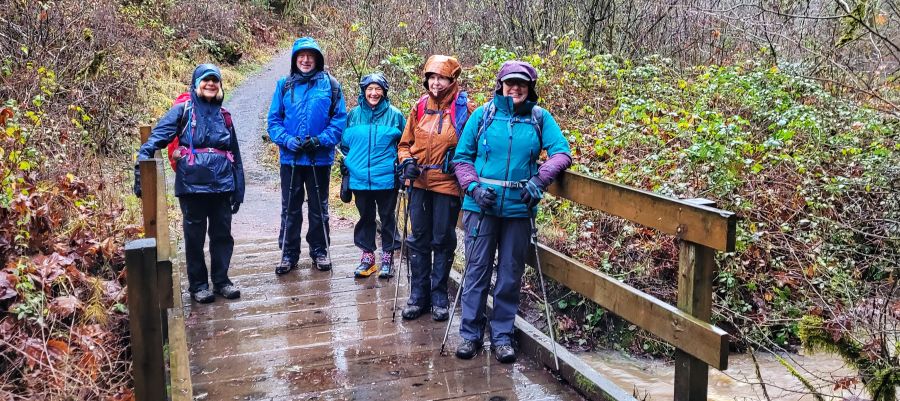by Steve Lundeberg
Among the recreationists who regularly enjoy McDonald and Dunn research forests are members of a nationwide, grassroots organization of women dedicated to the preservation of America’s wild places.

“We lead hikes here every month, sometimes more. We’re grateful to have the forest accessible,” said Peg Herring of the Willamette Valley Broadband, a local chapter of the national Great Old Broads for Wilderness. “We appreciate that the College of Forestry offers the research forest as a place for community members to hike and recreate and find solitude in the natural world. And we appreciate that the stewardship plans for the forest are being shared with those who use and love the forest. We are keen to protect its ecological values, which are irreplaceable.”
Headquartered in Durango, Colorado, Great Old Broads for Wilderness was founded in 1989 by “older women who love wilderness,” according to its website, for the purpose of bringing “knowledge, leadership and humor to the wilderness preservation movement.”
Since its inception, Great Old Broads has spread throughout the United States in the form of Broadbands, member-run local or regional chapters that support the group’s mission of education, advocacy, outreach and collaborative stewardship. Willamette Valley is one of four Broadbands in Oregon.
Among Great Old Broads is a strong representation of retired professionals, academics and scientists, said Herring, herself an OSU professor emerita of science communication. The Willamette Valley Broadband was established about 15 years ago by another OSU professor emerita, Carol Savonen, and now there are more than 300 people on its newsletter mailing list.
“It gives us opportunities to organize for the purpose of educating ourselves about forest issues and research, and it offers a beautiful place to recreate together,” Herring said. “The accessibility of McDonald and Dunn forests is a real gift to the community. Our desire is to see the forest sustained not just as a timber plantation but as a demonstration of research and ecological management as part of its mission of education.
“The Willamette Valley Broadband is focused on the legacy that’s left to future generations, and we’d like that to be an intact forest where students can learn and visitors can experience how forest ecosystems function,” she added. “We want to do all we can to ensure the forest is managed with that in mind.”


Is your organization still active as a 71-year-old woman who loves the forest I would greatly enjoy hikes with other people
Hi Cecelia – I’m not sure how active that group is, you can find more info about them here: https://www.greatoldbroads.org/chapters/oregon-willamette-valley-broadband/